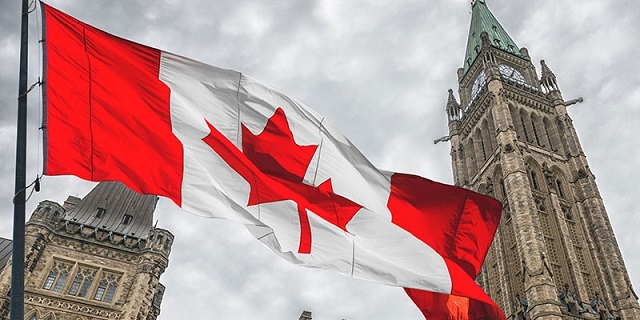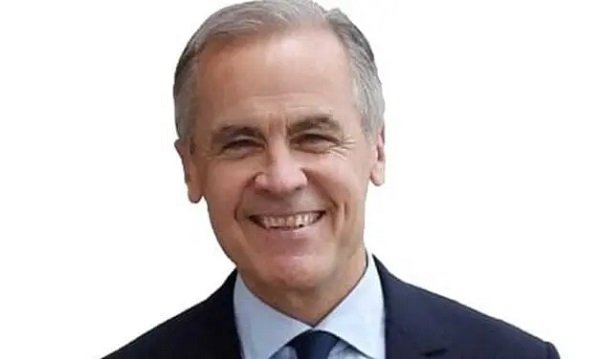Economy
Housing policy should focus on closing the demand-supply gap, not inducing demand or stifling supply

From the Fraser Institute
FEDERAL REFORMS TO IMPROVE HOUSING AFFORDABILITY
BY JOSEF FILIPOWICZ AND STEVE LAFLEUR
Canada’s declining housing affordability reflects a large, worsening imbalance between housing demand and housing supply.
Few policy areas are gaining as much attention in Canada as housing. This is unsurprising, given that Canada has the largest gap between homes prices and incomes among G7 nations (OECD, 2023) and rents continue to rise in most cities (Statistics Canada, 2023a). As eroding housing affordability has expanded to more parts of Canada, demands for policy solutions have grown beyond local jurisdictions, pressuring federal decisionmakers to act.
First, this essay offers a diagnosis of the issue—a large, growing imbalance between housing demand and supply. Second, it discusses federal policies affecting housing demand, urging better coordination and restraint amid tight supply conditions. Third, it discusses the federal government’s less-direct—though still important—options to improve housing supply.
Guiding principles: do no more harm, and close the demand-supply gap
Canada’s declining housing affordability reflects a large, worsening imbalance between housing demand and housing supply. This is evident when comparing trends in population growth and housing completions. Figure 1 charts these two metrics between 1972 and 2022. In recent years, Canada’s population growth has accelerated, while the number of homes completed has declined relative to the 1970s. 1

Policy efforts should focus on closing the demand-supply gap. The federal government should first ensure that it is not exacerbating the problem, either by stoking demand or by stifling supply, and second by both reviewing all existing policies through a supply-demand lens while implementing tailored policies aimed at closing the demand-supply gap.
Demand-side considerations for federal housing policy
Though all levels of government influence both housing demand and supply, the federal government’s policy levers pertain more directly to demand. They do so in two important ways.
First, federal policy influences population growth. As Canada’s birth rate has declined, population growth has been driven primarily by immigration (including both permanent and temporary residents) (Statistics Canada, 2023c). Though provinces may influence immigration decisions, the federal government establishes annual targets (where applicable) and admission criteria (Filipowicz and Lafleur, 2023).
Second, the federal government influences households’ ability to pay for housing. Policies for home buyers including the First-Time Home Buyers’ Tax Credit and the First Home Savings Account, which, combined with the Home Buyers’ Plan, enable the accumulation of tax-free savings for a down payment. 2 Federal policies for homeowners include the exemption from capital gains taxation on the sale of primary residences, loan insurance through the Canada Mortgage and Housing Corporation, and residential mortgage underwriting through the Office of the Superintendent of Financial Institutions. Combined, these policies influence the relative attractiveness of housing as an investment.
Without adequate supply, these policies result in higher prices, rather than greater affordability. The federal government should review all existing or proposed policies directly or indirectly impacting housing demand. Further, it should adopt the following two policy approaches:
• Stronger consideration of housing supply dynamics when determining short, medium and long-term immigration targets or visa issuance. For example, supply metrics (e.g. housing starts, completions, and rental vacancy rates) should help inform multi-year plans or criteria for permanent and non-permanent resident admissions.
• Refraining from introducing new demand-inducing subsidies, such as tax credits or subsidies to homebuyers and homeowners, while comprehensively reviewing the impact of existing subsidies.
Supply-side considerations for federal housing policy
Housing supply in Canada is influenced primarily by provincial and local governments. Decisions concerning land-use and growth planning—including for lands owned by the federal government—largely rest with these levels of government, meaning housing construction projects cannot be realized without first aligning with, and receiving approval from, local authorities. Federal policies aiming to grow the housing supply must account for this.
Federal influence on housing supply can be divided into four policy types. First are fiscal transfers. Every year the federal government transfers billions of dollars to municipalities to fund infrastructure. In some cases, funding is permanent and based on federal-provincial agreements.3 In other cases, funding is negotiated for specific projects.4
Second, the federal government also funds the development of non-market housing. Programs such as the National Co-Investment Fund and Rapid Housing Initiative offer low-interest or forgivable loans, and direct funding, respectively, to organizations building or acquiring non-market housing.
Third, federal tax policies and programs influence the financial feasibility of homebuilding. For example, federal sales and capital gains taxes apply differently to different housing types, such as condominiums, rental buildings and accessory dwelling units (e.g. basement or laneway suites).5
Further, federal programs such as the Rental Construction Financing Initiative and multi-unit mortgage loan insurance products influence project feasibility by providing rental builders with low-interest loans or reduced premiums.
Fourth, the federal government’s primary responsibility for immigration gives it significant influence over the mix of skills prioritized in application screening, affecting the construction sector’s ability to recruit workers. Indeed, the share of immigrants working in the construction sector was lower than that among Canada’s overall population in 2020 (BuildForce Canada, 2020), reflecting the longstanding selection preferences of federal immigration policy until more recent changes.6
The federal government should coordinate with local and provincial governments as it develops policies, avoiding the creation of additional barriers and duplication. Specifically, the following three approaches should inform federal efforts to improve housing supply:
• Tying all federal infrastructure funding to housing supply metrics such as housing stock growth, starts or completions, ensuring limited funds are directed to those regions facing the strongest growth pressures in a transparent fashion, while reducing administrative costs and jurisdictional overlap.
• Reviewing and reforming the tax treatment of all housing development, helping improve the feasibility of large- and small-scale projects Canada-wide.
• Further prioritizing skills related to homebuilding in immigration policies and eligibility criteria.
Conclusion
Faced with a widening gap between housing demand and supply, this essay focuses on the federal government’s influence on housing markets, offering five areas of policy action.
The most direct federal levers pertain to housing demand. Housing constraints should be weighed more heavily when setting immigration policy, including temporary immigration, and new demand-inducing policies such as homebuyer tax credits should be avoided, while existing policies should be reviewed.
Given the federal government’s less direct influence on housing supply, intergovernmental coordination is recommended. Limited transfer funding should follow local housing supply metrics, while the tax treatment of housing development could also be reformed, enabling a larger number of projects to be financially feasible. Lastly, immigration policies should emphasize skills required to build more housing.
Authors:
1 For more on the gap between population growth and housing completions, see Filipowicz (2023).
2 For a full list of incentives and rebates for homebuyers, see <https://www.cmhc-schl.gc.ca/consumers/home-buying/government-of-canada-programs-to-support-homebuyers>, as of February 5, 2023.
3 For example, the Canada Community-Building Fund (formerly the Gas Tax Fund) delivers approximately $2 billion annually to local governments.
It is governed by a series of federal-provincial agreements.
4 For example, the federal government has committed one-third of the capital funding required by the Surrey Langley SkyTrain. Similar agreements
are common for major transit infrastructure.
5 The federal government recently announced the removal of the goods and services tax on purpose-built rental housing, helping the feasibility
of this housing class. For more on the influence of federal taxation on rental housing, see Canadian Home Builders’ Association (2016).
6 Immigration, Refugees and Citizenship Canada changed screening processes in mid-2023, favouring trade occupations, among others. The full effects of these changes will become apparent with time.
Canadian Home Builders’ Association (2016). Encouraging Construction and Retention of Purpose-Built Rental Housing in Canada: Analysis of Federal Tax Policy Options. <https://www.evergreen.ca/downloads/pdfs/HousingActionLab/HAL_EncouragingConstructionAndRetention_FINAL.pdf> as of September 13, 2023.
Filipowicz (2023). Canada’s Growing Housing Gap: Comparing Population Growth and Housing Completions in Canada, 1972–2022.
Fraser Institute. <https://www.fraserinstitute.org/sites/default/files/canadas-growing-housing-gap-1972-2022.pdf>, as of February
5, 2024.
Filipowicz, Josef and Steve Lafleur (2023a). Getting Our Houses in Order: How a Lack of Intergovernmental Policy Coordination
Undermines Housing Affordability in Canada. Macdonald-Laurier Institute. <https://macdonaldlaurier.ca/getting-our-houses-in-order-how-a-lack-of-intergovernmental-policy-coordination-undermines-housing-affordability-in-canada/>, as of February 5, 2024.
Immigration, Refugees and Citizenship Canada (2023). Express Entry Rounds of Invitations: Category-based Selection. <https://www.
canada.ca/en/immigration-refugees-citizenship/services/immigrate-canada/express-entry/submit-profile/rounds-invitations/category-based-selection.html>, as of September 15, 2023.
International Monetary Fund (2023). Report for the 2023 Article IV Consultation. [or Country Report: Canada]. <https://www.imf.
org/en/Publications/CR/Issues/2023/07/27/Canada-2023-Article-IV-Consultation-Press-Release-and-Staff-Report-537072> as of
September 13, 2023.
Organisation for Economic Cooperation and Development [OECD]. 2023. Housing Prices (indicator). DOI: 10.1787/63008438.
OECD. <https://data.oecd.org/price/housing-prices.htm>, as of February 5, 2023.
Statistics Canada (2023a). Table 34-10-0133-01. Canada Mortgage and Housing Corporation, average rents for areas with a population of 10,000 and over. <https://www150.statcan.gc.ca/t1/tbl1/en/cv.action?pid=3410013301>, as of February 5, 2023.
Statistics Canada (2023b). Table 34-10-0127-01. Canada Mortgage and Housing Corporation, vacancy rates, apartment structures of six units and over, privately initiated in census metropolitan areas. <https://www150.statcan.gc.ca/t1/tbl1/en/tv.action?pid=3410012701>, as of February 5, 2024.
Statistics Canada (2023c). Table 17-10-0008-01. Estimates of the components of demographic growth, annual. <https://www150.
statcan.gc.ca/t1/tbl1/en/tv.action?pid=1710000801>, as of March 2, 2023.
Business
Canada’s loyalty to globalism is bleeding our economy dry

This article supplied by Troy Media.
Trump’s controversial trade policies are delivering results. Canada keeps playing by global rules and losing
U.S. President Donald Trump’s brash trade agenda, though widely condemned, is delivering short-term economic results for the U.S. It’s also revealing the high cost of Canada’s blind loyalty to globalism.
While our leaders scold Trump and posture on the world stage, our economy is faltering, especially in sectors like food and farming, which have been sacrificed to international agendas that don’t serve Canadian interests.
The uncomfortable truth is that Trump’s unapologetic nationalism is working. Canada needs to take note.
Despite near-universal criticism, the U.S. economy is outperforming expectations. The Federal Reserve Bank of Atlanta projects 3.8 per cent second-quarter GDP growth.
Inflation remains tame, job creation is ahead of forecasts, and the trade deficit is shrinking fast, cut nearly in half. These results suggest that, at least in the short term, Trump’s economic nationalism is doing more than just stirring headlines.
Canada, by contrast, is slipping behind. The economy is contracting, manufacturing is under pressure from shifting U.S. trade priorities, and food
inflation is running higher than general inflation. One of our most essential sectors—agriculture and food production—is being squeezed by rising costs, policy burdens and vanishing market access. The contrast with the U.S. is striking and damning.
Worse, Canada had been pushed to the periphery. The Trump administration had paused trade negotiations with Ottawa over Canada’s proposed digital services tax. Talks have since resumed after Ottawa backed away from implementing it, but the episode underscored how little strategic value
Washington currently places on its relationship with Canada, especially under a Carney-led government more focused on courting Europe than securing stable access to our largest export market. But Europe, with its own protectionist agricultural policies and slower growth, is no substitute for the scale and proximity of the U.S. market. This drift has real consequences, particularly for
Canadian farmers and food producers.
The problem isn’t a trade war; it’s a global realignment. And while Canada clings to old assumptions, Trump is redrawing the map. He’s pulling back from institutions like the World Health Organization, threatening to sever ties with NATO, and defunding UN agencies like the Food and Agriculture Organization (FAO), the global body responsible for coordinating efforts to improve food security and support agricultural development worldwide. The message is blunt: global institutions will no longer enjoy U.S. support without measurable benefit.
To some, this sounds reckless. But it’s forcing accountability. A senior FAO official recently admitted that donors are now asking hard questions: why fund these agencies at all? What do they deliver at home? That scrutiny is spreading. Countries are quietly realigning their own policies in response, reconsidering the cost-benefit of multilateralism. It’s a shift long in the making and long resisted in Canada.
Nowhere is this resistance more damaging than in agriculture. Canada’s food producers have become casualties of global climate symbolism. The carbon tax, pushed in the name of international leadership, penalizes food producers for feeding people. Policies that should support the food and farming sector instead frame it as a problem. This is globalism at work: a one-size-fits-all policy that punishes the local for the sake of the international.
Trump’s rhetoric may be provocative, but his core point stands: national interest matters. Countries have different economic structures, priorities and vulnerabilities.
Pretending that a uniform global policy can serve them all equally is not just naïve, it’s harmful. America First may grate on Canadian ears, but it reflects a reality: effective policy begins at home.
Canada doesn’t need to mimic Trump. But we do need to wake up. The globalist consensus we’ve followed for decades is eroding. Multilateralism is no longer a guarantee of prosperity, especially for sectors like food and farming. We must stop anchoring ourselves to frameworks we can’t influence and start defining what works for Canadians: secure trade access, competitive food production, and policy that recognizes agriculture not as a liability but as a national asset.
If this moment of disruption spurs us to rethink how we balance international cooperation with domestic priorities, we’ll emerge stronger. But if we continue down our current path, governed by symbolism, not strategy, we’ll have no one to blame for our decline but ourselves.
Dr. Sylvain Charlebois is a Canadian professor and researcher in food distribution and policy. He is senior director of the Agri-Food Analytics Lab at Dalhousie University and co-host of The Food Professor Podcast. He is frequently cited in the media for his insights on food prices, agricultural trends, and the global food supply chain
Troy Media empowers Canadian community news outlets by providing independent, insightful analysis and commentary. Our mission is to support local media in helping Canadians stay informed and engaged by delivering reliable content that strengthens community connections and deepens understanding across the country
Business
Carney’s spending makes Trudeau look like a cheapskate

This article supplied by Troy Media.
 By Gwyn Morgan
By Gwyn Morgan
The Carney government’s spending plans will push Canada’s debt higher, balloon the deficit, and drive us straight toward a credit downgrade
Prime Minister Mark Carney was sold to Canadians as the grown-up in the room, the one who’d restore order after Justin Trudeau’s reckless deficits. Instead, he’s spending even more and steering Canada deeper into trouble. His newly unveiled fiscal plan will balloon the deficit, drive up
interest costs and put Canada’s credit rating and economic future in jeopardy.
When Trudeau first ran for office, he promised “modest short-term deficits” of under $10 billion annually and a balanced budget by 2019. Instead, he ran nine consecutive deficits, peaking at $62 billion in 2023–24, and nearly doubled the national debt, from $650 billion to $1.236 trillion. That
reckless spending should have been a warning.
Yet Carney, presented for years as a safe, globally respected economic steward, is proving to be anything but. The recently released Main Estimates (the federal government’s official spending blueprint) project program spending will rise 8.4 per cent in 2025–26 to $488 billion. Add in at least $50 billion to service the national debt, and the federal tab balloons to $538 billion.
Even assuming tax revenues stay flat, we’re looking at a $40-billion deficit. But that’s optimistic. The ongoing tariff war with the United States, now hitting everything from autos to metals to consumer goods, is cutting deep into economic output. That means weaker revenues and a much larger shortfall. Carney’s response? Spend even more.
And the Canadian dollar is already paying the price. Since 2015, the loonie has slipped from 78 cents U.S. to 73. Carney’s spending spree is likely
to drive it even lower, eroding the value of Canadians’ wages, savings and retirement funds. Inflation? Buckle up.
Franco Terrazzano of the Canadian Taxpayers Federation nailed it in a recent Financial Post column: “Mark Carney was right: He’s not like Justin Trudeau, he spends more,” Terrazzano argues. “The government will spend $49 billion on interest this year and the Parliamentary Budget Officer projects interest charges will be blowing a $70-billion hole in the budget by 2029. That means our kids and grandkids will be making payments on Ottawa’s debt for the rest of their lives.”
Meanwhile, Canada’s credit rating is under real threat. An April 29 report by Fitch Ratings warned that “Canada has experienced rapid and steep fiscal deterioration, driven by a sharply weaker economic outlook and increased government spending during the electoral cycle. If the Liberal program is implemented, higher deficits are likely to increase federal, provincial and local debt to above 90 per cent of GDP.”
That’s not just a red flag; it’s a fire alarm. A downgraded credit rating means Ottawa will pay more to borrow, which trickles down to higher interest rates on everything from provincial debt to mortgages and business loans.
But this decline didn’t start with tariffs. The rot runs deeper. One of the clearest signs of a faltering economy is falling business investment per worker. According to the C.D. Howe Institute, investment has been shrinking since 2015. Canadian businesses now invest just 66 cents of new capital for every dollar invested by their OECD counterparts; only 55 cents compared to U.S. firms. That means less productivity, fewer wage gains and stagnating living standards.
Why is investment collapsing? Policy. Regulation. Taxes. Uncertainty.
The C.D. Howe report laid out a straightforward to-do list, one the federal government continues to ignore:
Reform corporate taxes to attract capital investment.
Introduce early-stage investment incentives.
Tear down regulatory barriers delaying resource and infrastructure projects, especially in energy (maybe then Alberta won’t feel like seceding).
Promote IP investment with targeted tax credits.
Bring stability and predictability back to the regulatory process.
Instead, what Canadians get is policy chaos and endless virtue-signalling. That’s no substitute for economic growth. And let’s talk about Carney’s much-touted past. Voters were bombarded with reminders that he led the Bank of Canada during the 2008–09 financial crisis. But it was Jim Flaherty, Stephen Harper’s finance minister, who made the hard fiscal decisions that got the country through it. Carney’s tenure at the Bank of England? A different story. As former U.K. Prime Minister Liz Truss put it: “Mark Carney did a terrible job” at the Bank of England. “He printed money to a huge extent, creating inflation.”
Fast-forward to today, and Canada’s performance is nothing short of dismal. Our GDP per capita sits at just $53,431, compared to America’s $82,769. That’s not just a bragging-rights statistic. It reflects real differences in productivity, competitiveness and national prosperity. Worse, over the past 10 years, Canada’s per capita GDP has grown just 1.1 per cent, second worst in the OECD, ahead of only Luxembourg.
We remain a great country filled with capable people, but our most significant fault may be how easily we fall for image over substance. First with Trudeau’s sunny ways. Now with Carney’s global banker persona. The reality? His plan risks stripping Canadians of their prosperity, downgrading our creditworthiness and deepening long-term decline.
It pains me to say it, but unless something changes fast, Canadians face continued erosion in their standard of living and inflation-driven losses in their savings. The numbers are grim. The direction is wrong. And the consequences are generational.
Trudeau fooled voters with promises of restraint. Carney’s now asking for the same trust, with an even bigger bill attached. Canadians can’t afford to make the same mistake twice.
Gwyn Morgan is a retired business leader who has been a director of five global corporations
-

 Agriculture2 days ago
Agriculture2 days agoCanada’s supply management system is failing consumers
-

 Economy2 days ago
Economy2 days agoTrump opens door to Iranian oil exports
-

 Alberta1 day ago
Alberta1 day agoCOVID mandates protester in Canada released on bail after over 2 years in jail
-

 Crime1 day ago
Crime1 day agoProject Sleeping Giant: Inside the Chinese Mercantile Machine Linking Beijing’s Underground Banks and the Sinaloa Cartel
-

 Business1 day ago
Business1 day agoCanada’s loyalty to globalism is bleeding our economy dry
-

 Alberta1 day ago
Alberta1 day agoAlberta uncorks new rules for liquor and cannabis
-

 International1 day ago
International1 day agoTrump transportation secretary tells governors to remove ‘rainbow crosswalks’
-

 Business1 day ago
Business1 day agoCarney’s spending makes Trudeau look like a cheapskate








